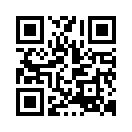Information on Touch Screen Technology
The touchscreen is an increasingly popular way of interfacing with technology. Computers, smart phones, tablet devices and e-book readers are all implementing forms of touchscreen technology. Using a touchscreen allows a device to provide a customized and fully functional user interface even on a very small device. There are many different forms of touchscreen technology, but they all seek to achieve the goal of providing a smooth and responsive interface.
History
Touchscreens can be traced to the 1950s, when the invention of the light pen allowed for users to input data onto a computer using a stylus. This made it easier to create images on a computer, and as computers became more popular, light pens were increasingly used for graphics design. The first multi-touch interface which could respond to human input was the Flexible Machine Interface, created by the University of Toronto in 1982.
Normal vs. Multi-Touch
While all touchscreen interfaces do respond to human touch, they do not all have the ability to respond to multiple touches at once. Although very common in smart phones and tablet devices, some touchscreen computers don't support multi-touch functionality. This means that only one touch can be registered at a time and that multi-touch gestures, such as pinching to zoom in, are not support. This is not just a hardware issue, but also a software one, as many versions of Windows do not support multi-touch.
Resistive Touchscreens
A resistive touchscreen consists of flexible sheets of material that have a resistive coating and are slightly separated. When a person touches the screen, the two sheets of material come into contact. This registers the location of the touch. Because resistive touchscreens rely on pressure to register a touch, they can be used with a stylus or other object. Resistive touchscreens are inexpensive but have been criticized for feeling sluggish. Multi-touch functionality is possible but rare.
Capacitive Touchscreens
Capacitive touchscreens consist of a glass panel layered with a capacitive metallic material that is conductive. When a person's finger touches the display, the small amounts of electricity in the human body causes a slight change in the voltage of the metallic material. Sensors on the screen detect the current being received and use that information to determine where the touch occurred. Capacitive touchscreens are very accurate and support multi-touch. However, they can't be used with objects such as a stylus because they are not conductive.
Infrared Touchscreens
An infrared touchscreen uses a pattern of infrared LED beams and sensors around the edges of a screen to detect a disruption in the pattern of the beams of infrared light. The way the pattern of infrared light is disturbed allows the system to determine the location of the touch. This system is bulky and not suited for consumer devices but is common in business applications which do need require portability. Infrared systems are extremely durable, and they work with any kind of input. Infrared systems usually provide superior image clarity and brightness because the method of determining touch is not inside the screen itself. Multi-touch is not supported.


